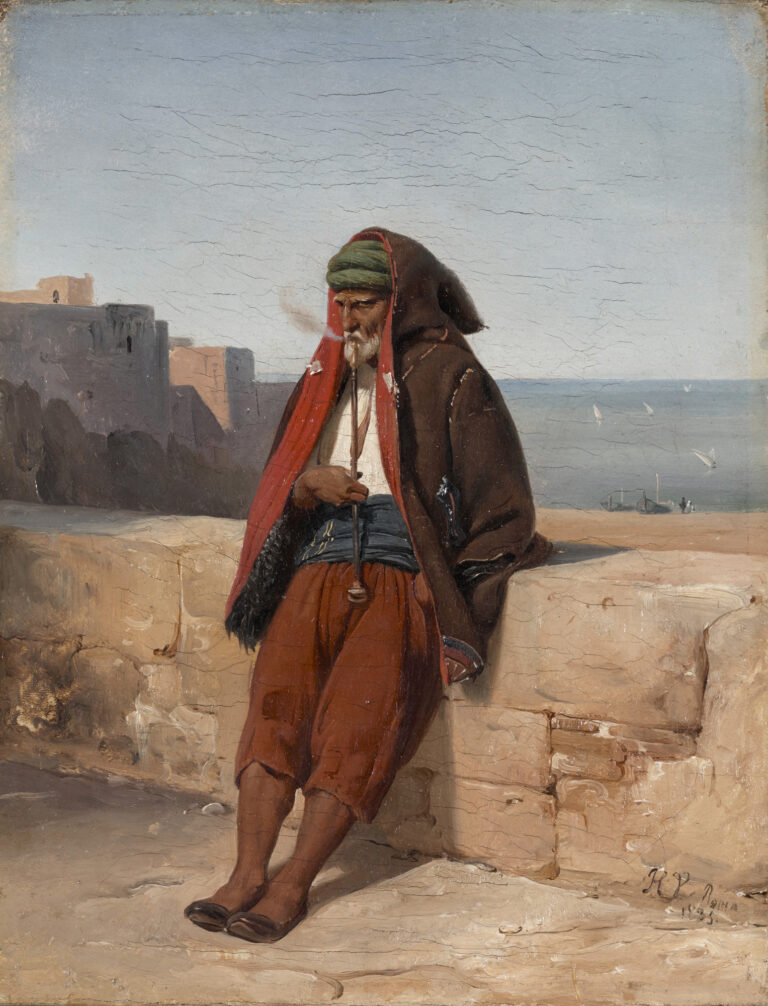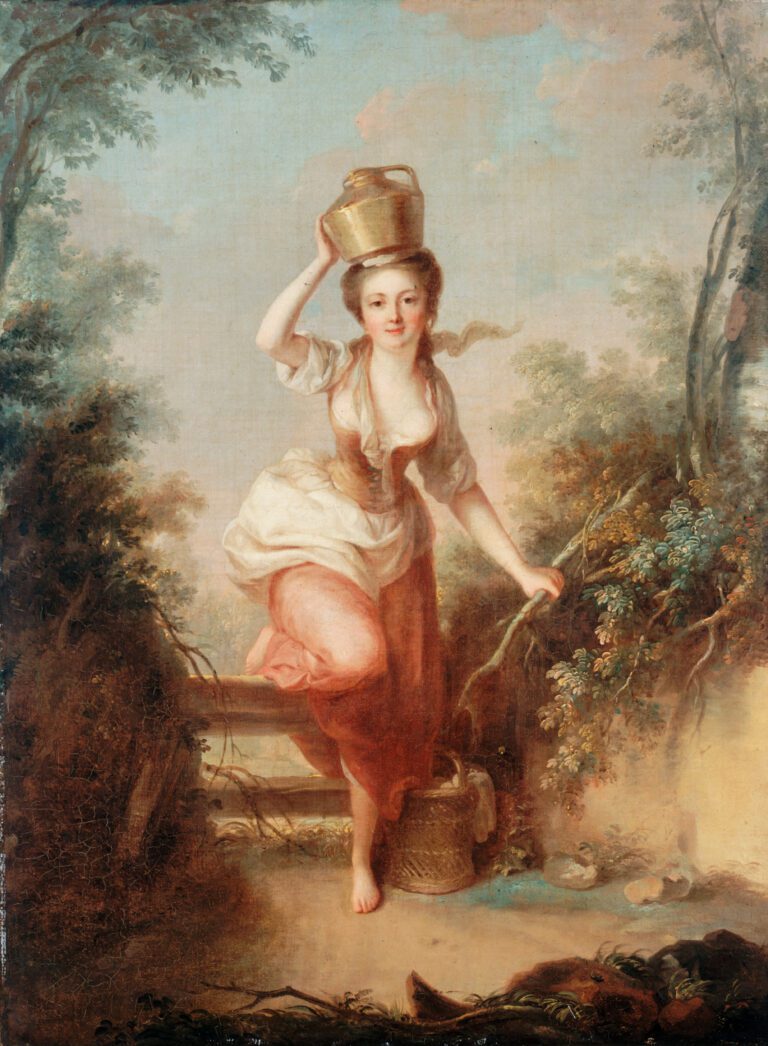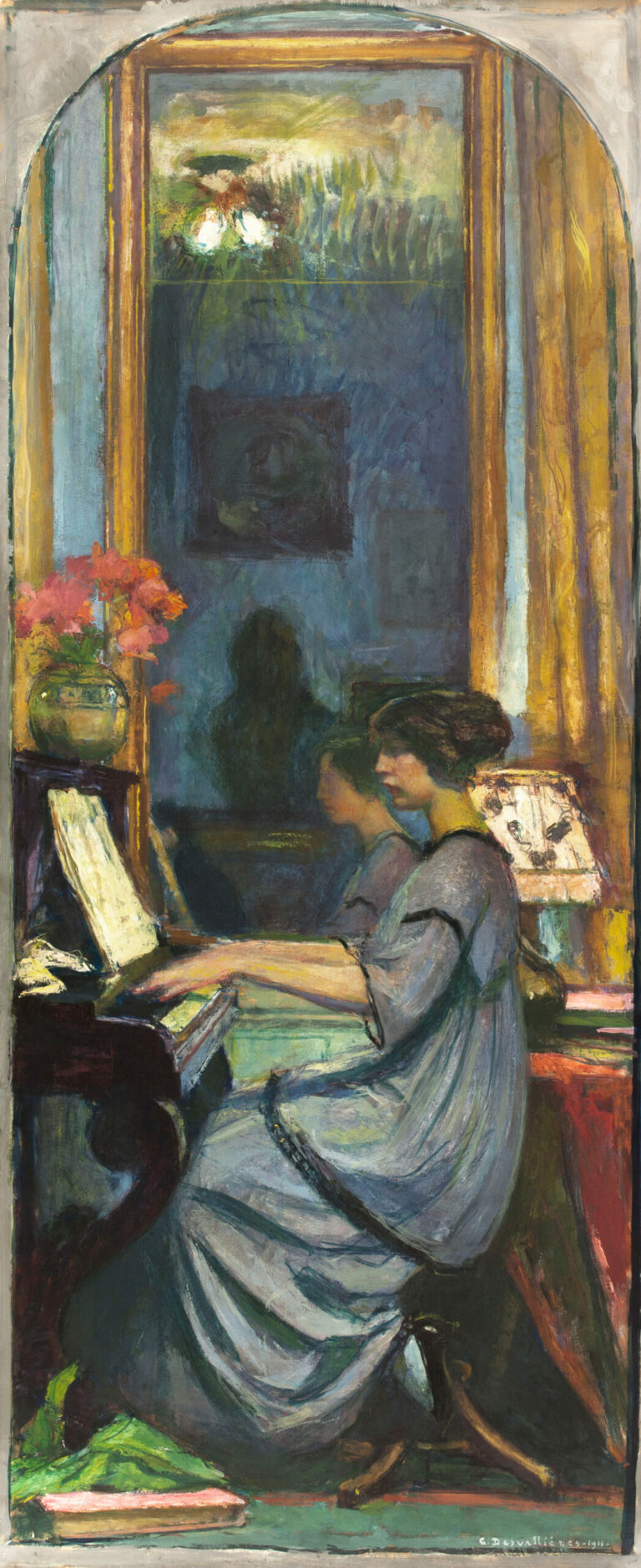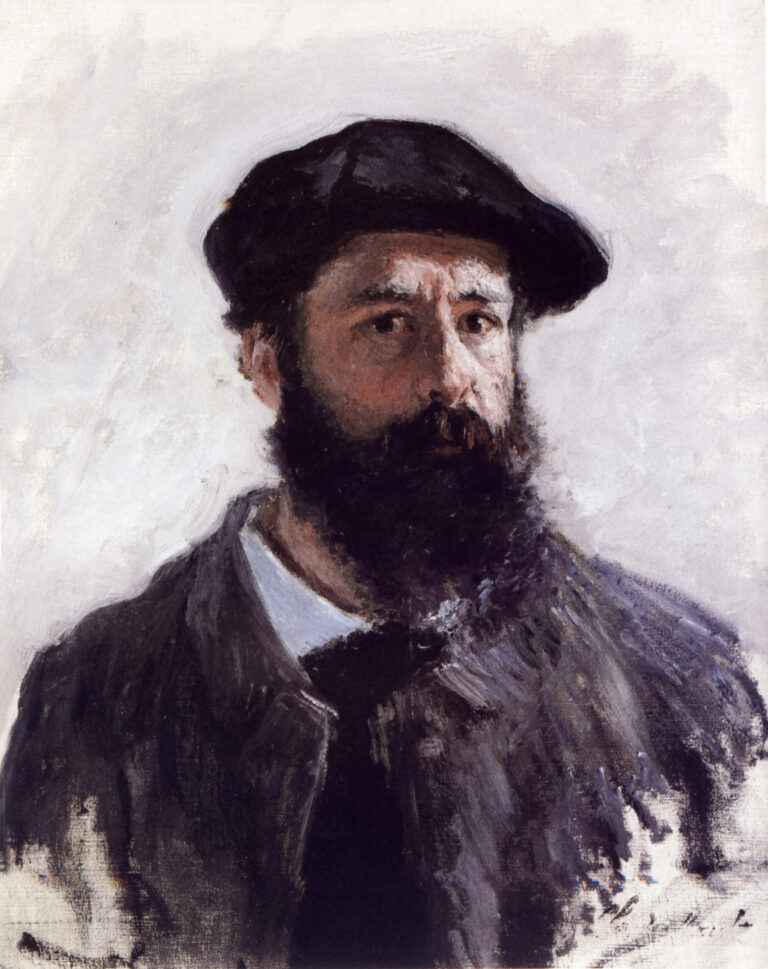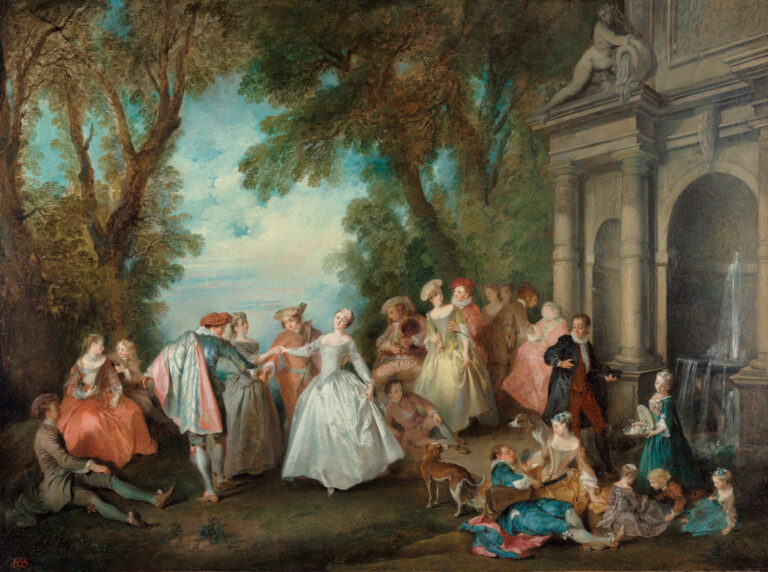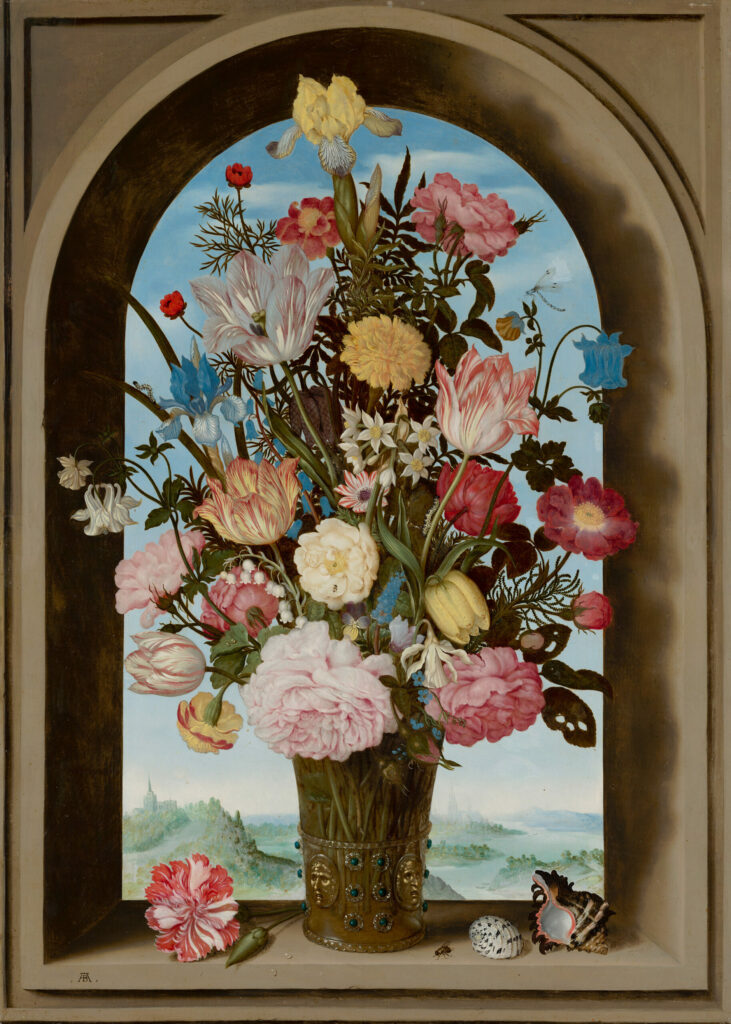
This still life from 1618 perfectly illustrates the art of the “impossible bouquet” dear to Flemish masters. Bosschaert presents in a jewel-adorned vase a floral composition of exceptional richness, bringing together thirty different species: striped tulips, peonies, irises, roses, carnations, and narcissi coexist in skillful balance.
The artist displays his technical virtuosity by rendering each petal with scientific precision, transforming this window into a showcase for an idealized botanical catalog. The architectural frame creates a striking trompe-l’œil effect, opening onto a typical Dutch landscape. In the foreground, a few scattered flowers, shells, and an insect complete this celebration of natural diversity, testament to the period’s taste for exoticism and rarity, notably these still-precious tulips that fueled commercial speculation.
Further information
- Vase of Flowers in a Window, by Ambrosius Bosschaert the Elder, 1618
- 64 x 46 cm, oil on panel
- Mauritshuis, The Hague, displayed in Room 3
- https://www.mauritshuis.nl/en/our-collection/artworks/679-vase-of-flowers-in-a-window
Ambrosius Bosschaert the Elder (1573-1621) was born in Antwerp. This Flemish painter quickly became one of the undisputed masters of floral still life in the Dutch Republic. Trained in the Flemish tradition of meticulous detail, he revolutionized the genre by abandoning medieval symbolic compositions in favor of an almost scientific approach to botany. His works testify to Dutch bourgeoisie’s infatuation with exotic flowers and natural curiosities, reflecting the commercial prosperity of the Golden Age. Bosschaert worked from nature, collecting sketches and studies throughout the year to compose his impossible bouquets where local species and imported varieties coexist. He founded a true artistic dynasty, transmitting his technique to his three sons—Ambrosius the Younger, Johannes, and Abraham—as well as to his brother-in-law Balthasar van der Ast.

